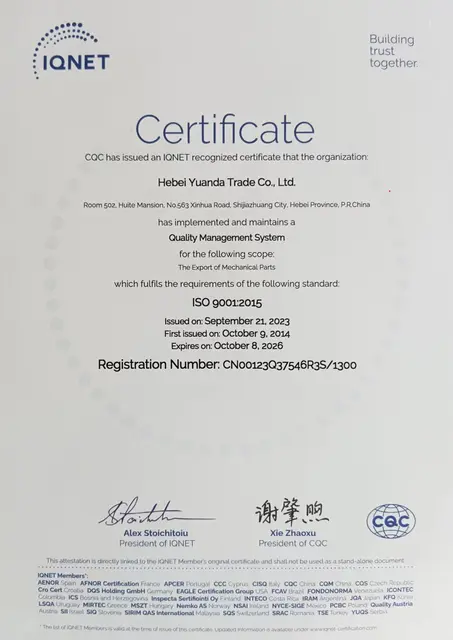Mobile:+86-311-808-126-83
Email:info@ydcastings.com
French
metal casting molds
The Importance of Metal Casting Molds in Manufacturing
Metal casting is a pivotal process in manufacturing, providing the foundational elements for a variety of industries, from automotive to aerospace. The heart of this process lies in the creation of molds, which serve as the blueprints for shaping molten metal into usable parts. Understanding metal casting molds, their types, and their applications is crucial for anyone involved in manufacturing.
Metal casting molds come in several types, each tailored to specific applications. The most common types include sand molds, investment molds, and permanent molds. Sand molds, made from a mixture of sand, clay, and water, are favored for their versatility and cost-effectiveness. They are particularly useful for low to medium production runs and are often used in the automotive industry for casting engine blocks.
Investment molds, or lost-wax molds, are employed for producing intricate designs and precise dimensions. This method involves creating a wax model that is coated in a ceramic material. Once the ceramic hardens, the wax is melted away, leaving a mold that allows for the detailed castings often required in jewelry and high-end components for aerospace applications.
metal casting molds

Permanent molds, typically made of metal, are used for high-volume production runs. They allow for faster cooling times and repeated use. This type of mold is ideal for applications where precision and durability are paramount. Using permanent molds ensures consistency and quality, making them preferable in mass production settings.
The selection of a suitable mold type impacts both the quality of the final product and the efficiency of the manufacturing process. Factors to consider include the material properties of the final product, production volume, and design complexity. Additionally, proper maintenance and preparation of molds play a significant role in prolonging their lifespan and ensuring a high-quality casting process.
In recent years, advancements in technology have introduced innovations in mold design and materials. 3D printing has emerged as a game-changer, allowing for rapid prototyping of molds that can accommodate complex geometries and reduce lead times. This approach not only enhances efficiency but also opens new avenues for creativity in design.
In conclusion, metal casting molds are essential components of the manufacturing process, influencing both the quality and efficiency of castings. Understanding the various types of molds, their applications, and advancements in technology can empower industries to achieve better productivity and product quality, ultimately driving innovation in the marketplace.











